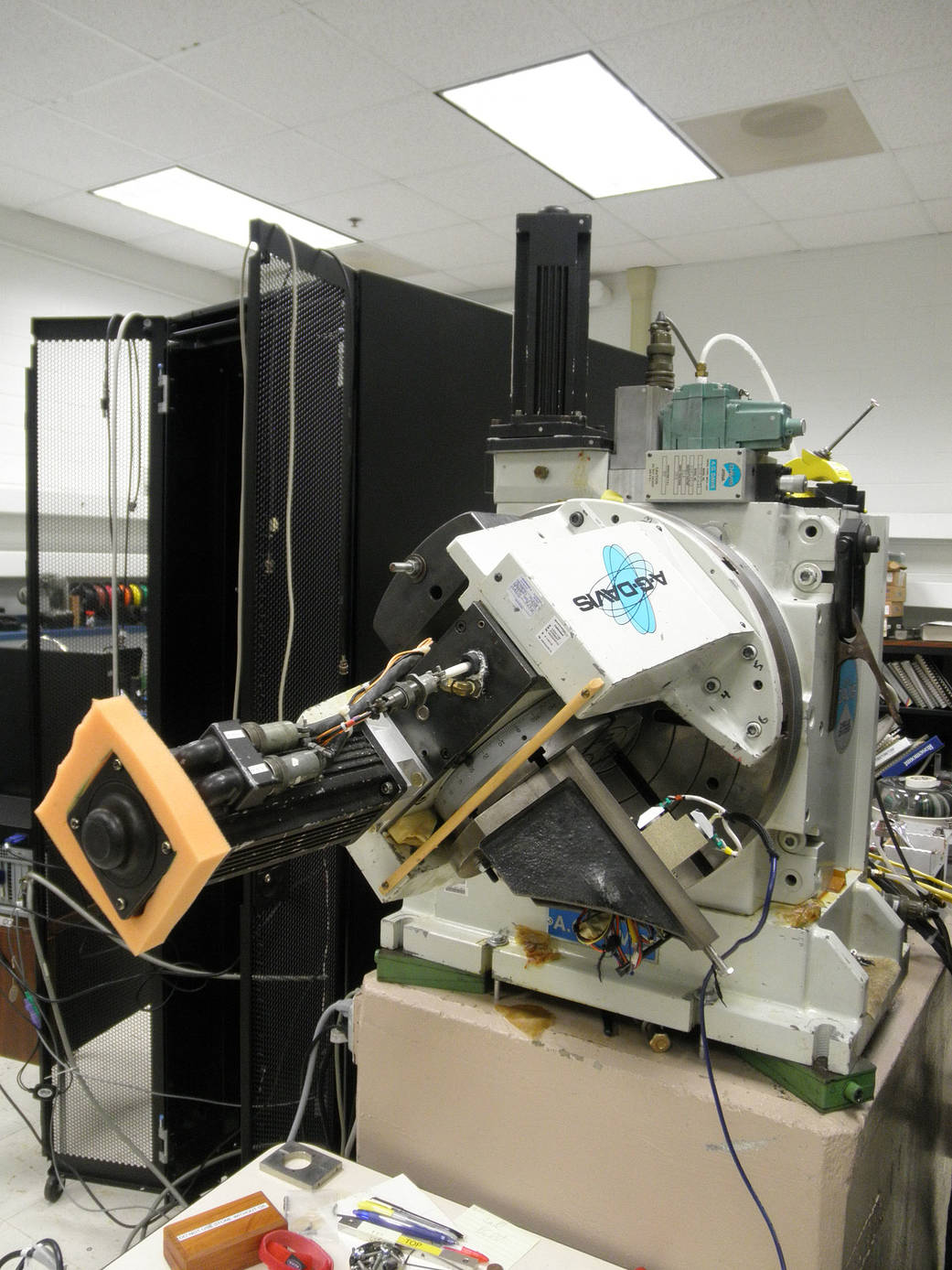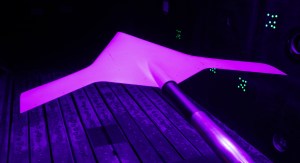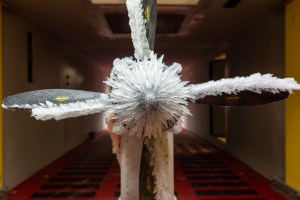Home
Quick Facts
Techniques
Capabilities
Gallery
NASA’s angle measurement techniques address different types of instrumentation for establishing an adequate model angle with respect to the airflow. These techniques, as well as the information that is acquired, can also be applied in new ways to different situations to provide additional capabilities for research and design. Those capabilities may provide new forms of information or improve a measurement system.
The forces that are present on a model are often largely dependent on the angle of attack, and thus it is particularly important to accurately measure the angle of a vehicle or model with respect to the ground or the airflow.
Important aspects of instrumentation for a proper model angle include:
Angle-of-Attack (AoA) Packages
Angle of Attack is an on-board sensor that is mounted inside a model or aircraft that is designed to measure the pitch of the model during testing (wind-on). These sensors use local gravity as a reference to determine model angle. The ideal sensor should be immune from vibration and model-support-induced tangential accelerations. The sting whip system (see below) adds additional sensors to the basic accelerometer package to help compensate for these errors.
+ See “AoA Package” Image in Gallery
Angle Measurement System (AMS)
A relationship between model angle of attack and the wind tunnel facility must be established prior to wind-on testing. One of the systems used by test engineers to do this is the Angle Measurement System (AMS) developed at NASA Langley. Originally designed to measure taper angles, the system has been adapted to measure absolute pitch and roll angles as well as measuring sting bending angles during model buildup. Development continues on the AMS to further improve the overall system performance and stability.
+ See “Angle Measurement System (AMS)” Images in Gallery
Sting Whip Technology
There exists an error known as “Sting Whip” which is caused by aerodynamically-induced forces imparting dynamics on sting-mounted models. This can cause angle error 10-100 times greater than current accuracy goals, largely depending on the combination of the sting, model, and balance that are used. A new system was developed to address this issue and take these forces into account in order to reduce this error in angle of attack measurements by an order of magnitude. This technology was developed by NASA’s Langley Research Center.
Developing Techniques
ATP Test Technology is continually seeking out means of improving NASA’s techniques for measuring flow variables. New instrumentation can provide fresh insight into flow characteristics and model performance, while improving existing techniques can increase measurement accuracy and give researchers greater detail about flow quality. This information also helps designers, who may use it to make greater improvements to model design.
Suitcaseless Angle Measurement System (AMS)
A new AMS unit is being developed that does not require a local laptop unit, so the controlling PC may reside in a control room. This helps the system to remain at the temperature at which it was calibrated (room temperature). Additionally, the new system can update at 10 Hz instead of 0.167 Hz, and has a greater potential to be used at other facilities. The suitcaseless system is also independent of the length of the cable that connects the instrument to the data system. This is a collaborative effort between NASA’s Langley Research Center and NASA’s Ames Research Center.




































